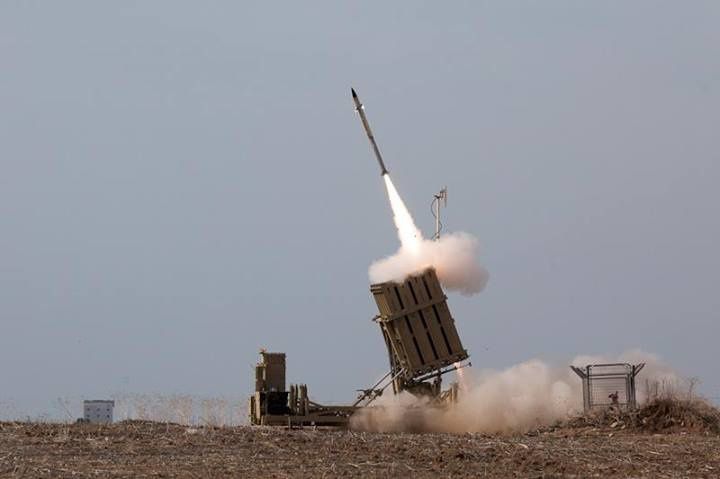photo Israel Sun/Rex Features
TEL AVIV, Israel, Dec. 2 (UPI)
The U.S. Army will decide in the next few weeks whether it will buy Israel's Iron Dome anti-rocket defense system, developed by Rafael Advanced Defense Systems, to protect bases in Iraq and Afghanistan.
Rafael and the U.S. Raytheon Co., which produces the Patriot air-defense system, teamed in August to market Iron Dome, currently used to defend against Palestinian rockets, in the United States.
Iron Dome is designed to counter rockets and artillery shells with a range of 2-43 miles. It's the first system of its type to be used in combat.
Yossi Druker, head of Rafael's Air-to-Air Directorate, said Wednesday that the winner of the tender issued by the Pentagon is expected to be announced in January.
"Iron Dome is said to be compatible with the U.S. Army's Counter-Rocket and Artillery and Mortar system, or C-RAM, as part of layered defense for military bases," The Jerusalem Post observed.
Iron Dome made its combat debut in April in southern Israel against Palestinian rockets and the military says it has notched a success rate of 85 percent against Palestinian rockets it sought to intercept.
The system's computer can distinguish which rockets will hit populated areas and those that won't. It only fires on those that endanger Israeli lives.
The Israeli air force, which is responsible for air defense, has three Iron Dome batteries operational, primarily in the south to counter short-range rockets fired by militants from the Hamas-ruled Gaza Strip.
But the military acknowledges that it needs 15-20 Iron Dome batteries to effectively provide protection from short-range missiles and rockets along the northern border with Lebanon and the southern frontier with Gaza.
So the Israelis may find themselves on the horns of a dilemma if the Americans decide they want Iron Dome: Who will get priority, homeland defense or developing a potentially lucrative export market for this unique system, the first operational short-range air-defense system in the world?
The Israelis say they face missile threats on several fronts, from Syria, Iran, Hezbollah in Lebanon and Hamas and its allies in Gaza.
These threats range from intermediate-range ballistic missiles from Iran and Syria, with shorter-range weapons from Hezbollah and the Palestinians.
The nightmare scenario is that if a new conflict erupts in the Middle East, every inch of the Jewish state will be exposed to a sustained and unprecedented bombardment by these foes.
Military planners say this could last for weeks, with up to 200 missiles and rockets a day hammering Israel, including the massive urban conurbation around Tel Aviv in the center of the country.
Every Iron Dome battery will be needed but Israel's defense industry, like those in the United States and Europe, is increasingly dependent on export sales to keep production lines rolling amid global cutbacks in defense spending.
Singapore has reportedly bought Iron Dome, although no details are available and the Israeli Defense Ministry hasn't confirmed the sale. India and South Korea have also shown interest.
The air force expects to take delivery of David's Sling, another anti-missile system developed by Rafael, within the next year, Brig. Gen. Doron Gavish, commander of the air force's Air Defense Division, said Thursday.
This system, also known as Magic Wand, is designed as the middle-tier of Israel's planned multilayer missile defense shield. It's designed to counter missiles and rockets with ranges of 25-185 miles.
Meantime, The Jerusalem Post reports that state-owned Israel Aerospace Industries is building a third battery of the Arrow-2 high-altitude, long-range missile interceptor to be deployed near Tel Aviv.
The Israeli air force has two Arrow batteries deployed in southern and northern Israel. The system is designed to counter Iran's Shehab-3b, Sejjil-2 and Soviet-designed Scud ballistic missiles. Syria also has Scuds.
Central Israel was chosen for the site of the new battery "because it provides the best protection for long-range threats which Israel faces from a number of directions," a military spokesman said.
IAI and Boeing in the United States are developing the Arrow-3, which will extend the range and altitude of the missile, which allows it to intercept ballistic missiles earlier in their trajectory and further from Israel.
The Arrow-3's first fly-out test is scheduled within the next few months. The United States contributed the bulk of the funds to develop the Arrow system.






























